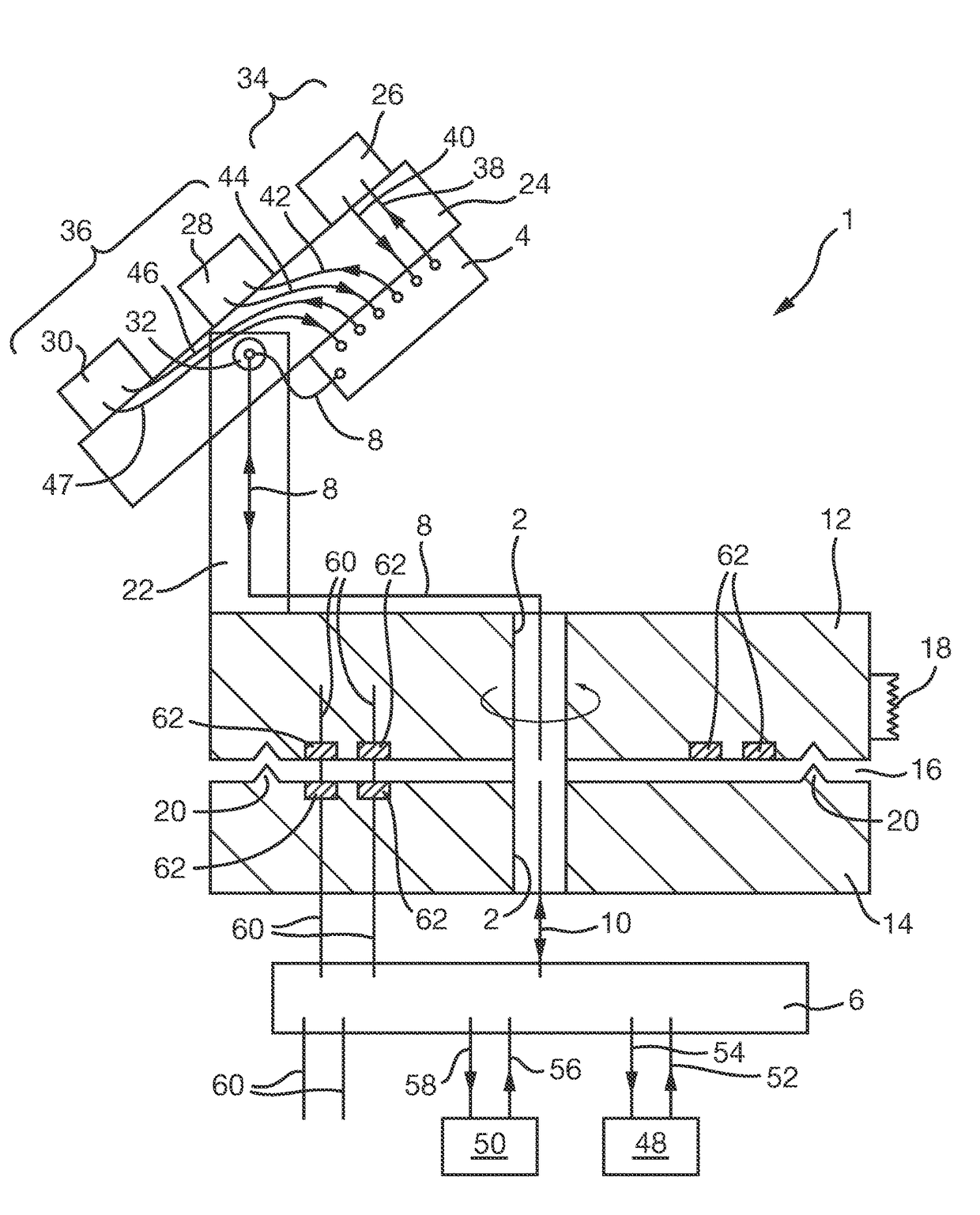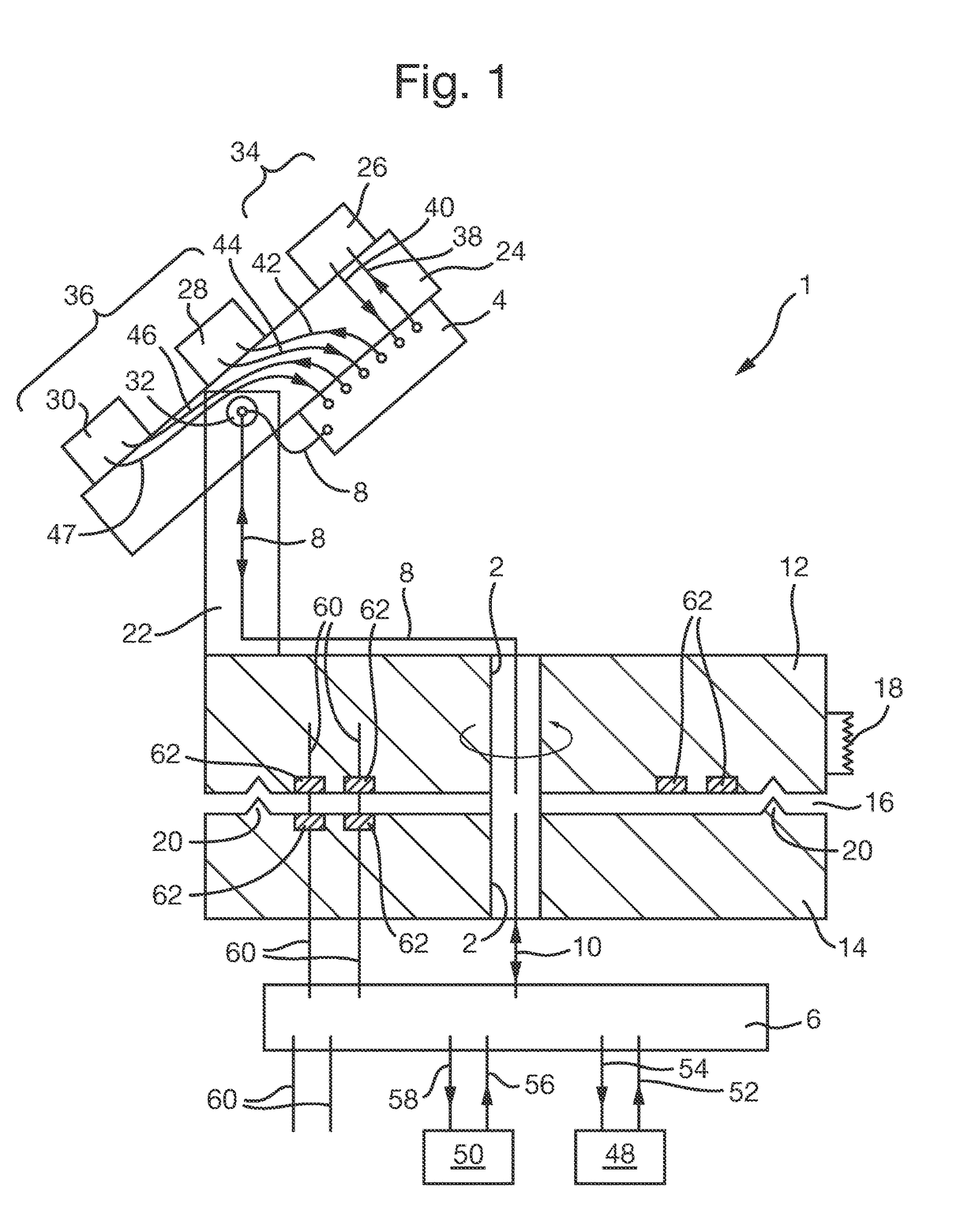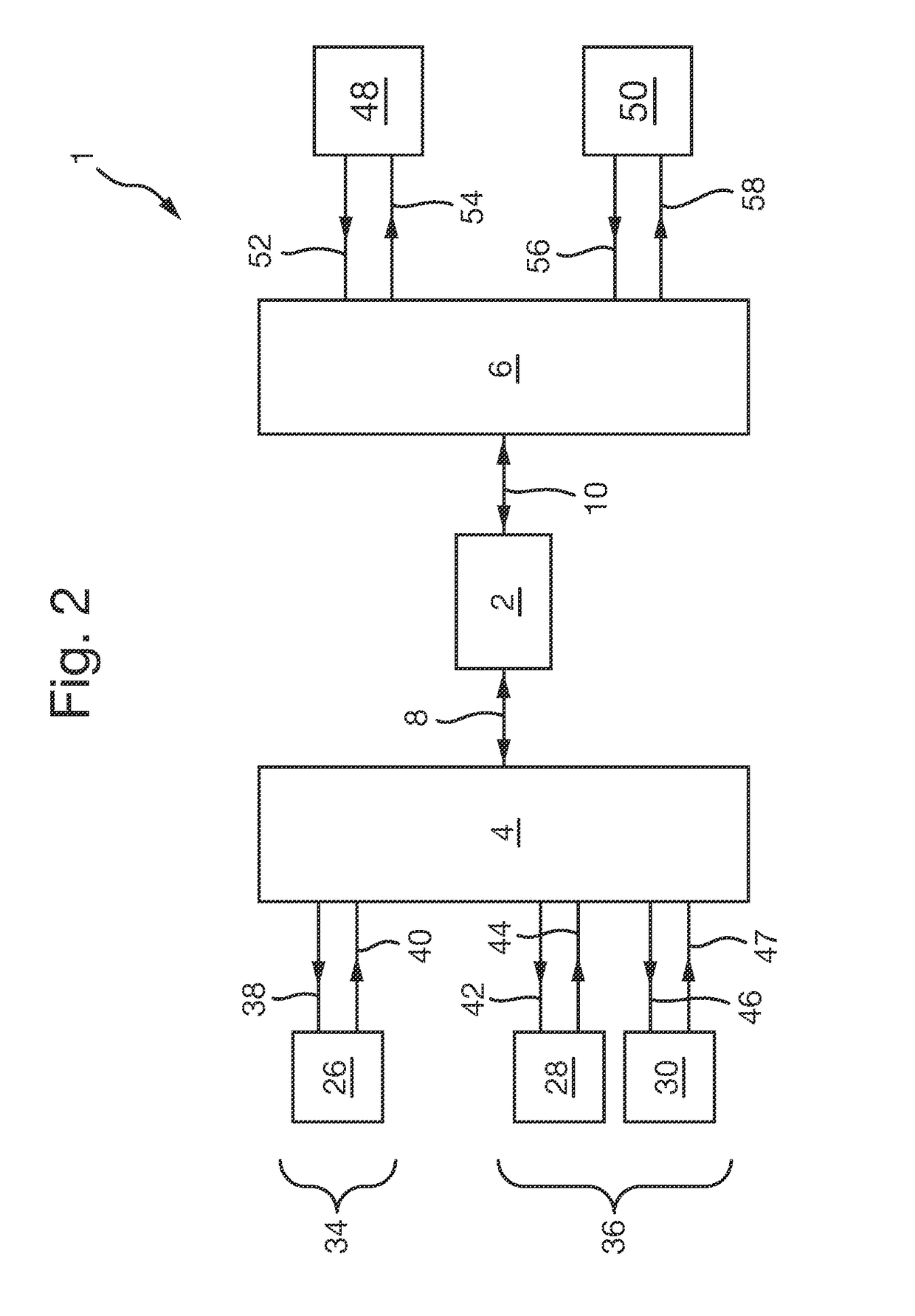Apparatus and methods for use with optical rotating joint
a technology of optical rotating joints and apparatuses, applied in the field of apparatuses and methods for use with optical rotating joints, can solve the problems of affecting the operation of the whole interface, so as to achieve the effect of reducing the number of channels, and reducing the complexity of implementation
- Summary
- Abstract
- Description
- Claims
- Application Information
AI Technical Summary
Benefits of technology
Problems solved by technology
Method used
Image
Examples
Embodiment Construction
[0037]FIG. 1 is a schematic illustration (not to scale) of a first embodiment of an ORJ interface system 1. For convenience also presented is FIG. 2 which is a simplified block diagram illustration of the ORJ interface system 1, in which schematic mechanical details are omitted for ease of reference regarding the electrical and optical couplings present and which will be described in the following.
[0038]In the following description, the terminology “a rotating . . . ” and “a fixed . . . ” is used as a form of annotation for ease of reference to allow the reader to readily appreciate which elements in the particular embodiments described below are on the rotating side of the overall arrangement and which are on the fixed side. It will be appreciated that such terminology is merely used for identification purposes, and does not specify or imply any intrinsic rotation or otherwise (other than by virtue of being on the main rotating platform or not on it) of the particular element so id...
PUM
 Login to View More
Login to View More Abstract
Description
Claims
Application Information
 Login to View More
Login to View More - R&D
- Intellectual Property
- Life Sciences
- Materials
- Tech Scout
- Unparalleled Data Quality
- Higher Quality Content
- 60% Fewer Hallucinations
Browse by: Latest US Patents, China's latest patents, Technical Efficacy Thesaurus, Application Domain, Technology Topic, Popular Technical Reports.
© 2025 PatSnap. All rights reserved.Legal|Privacy policy|Modern Slavery Act Transparency Statement|Sitemap|About US| Contact US: help@patsnap.com



